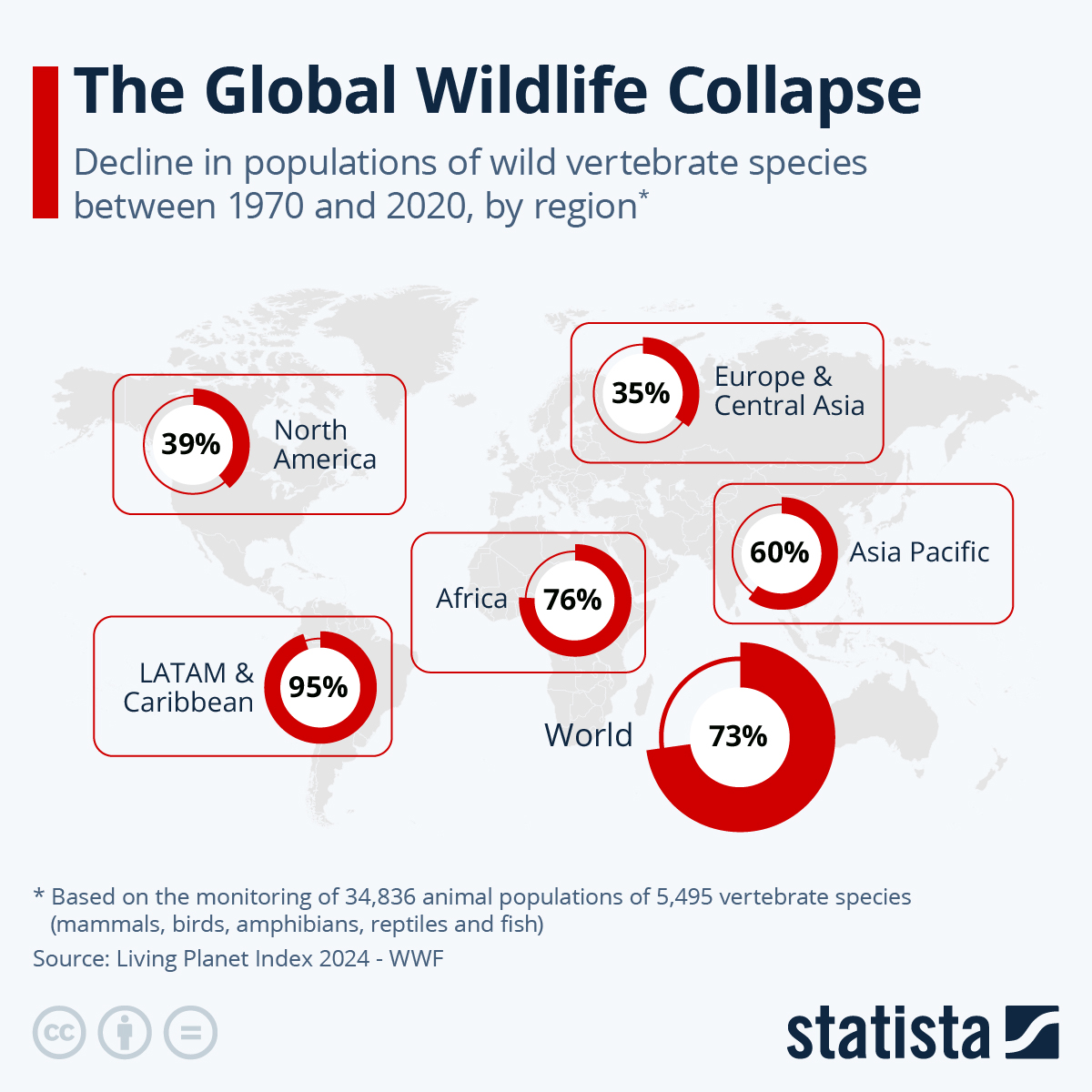Global Wildlife Populations Suffer severe decline because of climate change
The Living Planet Index (LPI) tracks the abundance of almost 21,000 populations of mammals, birds, fish, reptiles and amphibians around the world. For two decades it has used the trends that emerge as a measure for changes in biodiversity.
According to the report, Average abundance of 20,811populations representing 4,392 species monitored across the globe declined by 68% between 1970 and 2016.
The 3,741 monitored populations – representing 944 species of mammals, birds, amphibians, reptiles and fishes – in the Freshwater Living Planet Index have declined by an average of 84% (range: -89% to -77%), equivalent to 4% per year since 1970. Most of the declines are seen in freshwater amphibians, reptiles and fishes; and they’re recorded across all regions, particularly Latin America and the Caribbean .
Soil hosts one of the largest reservoirs of biodiversity on Earth: up to 90% of living organisms in terrestrial ecosystems, including some pollinators, spend part of their life cycle in soil habitats 29.
The variety of soil components, filled with air and water, create an incredible diversity of habitats for a myriad of different soil organisms that underpin our life on this planet Besides food production, soil biodiversity provides a vast range of ecosystem functions and services, including soil formation, the retention and purification of water, nutrient cycling, the degradation of some soil contaminants and the regulation of greenhouse gases, as well as sustaining plant, animal and human health.
Only 10% of plants have been assessed for the global IUCN Red List and current coverage is biased, with trees and threatened species more likely to have been assessed 49. However, assessment of a sample of thousands of species representing the taxonomic and geographic breadth of global plant diversity showed that one in five (22%) are threatened with extinction, most of them in the tropics 50. Plant extinction risk is comparable to that of mammals and higher than for birds.
All economic activities are either directly or indirectly dependent on nature. The Nature Risk Rising report found that more than half the world’s GDP – US$44 trillion – is highly or moderately dependent on nature and its services
 You will find more infographics at Statista
You will find more infographics at Statista
Comments
Post a Comment